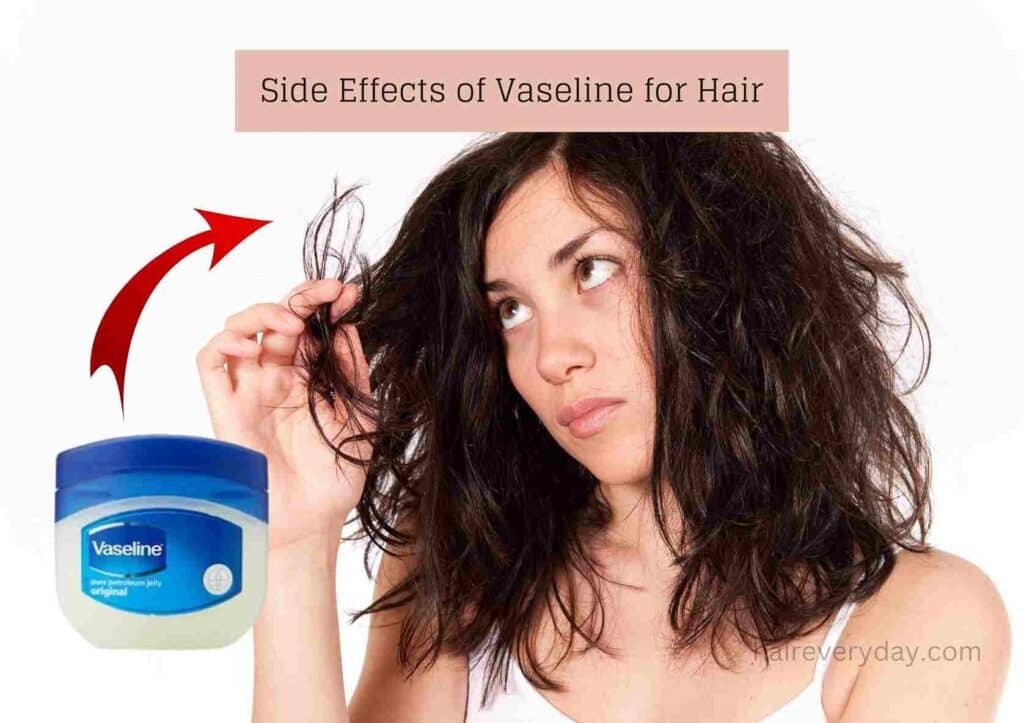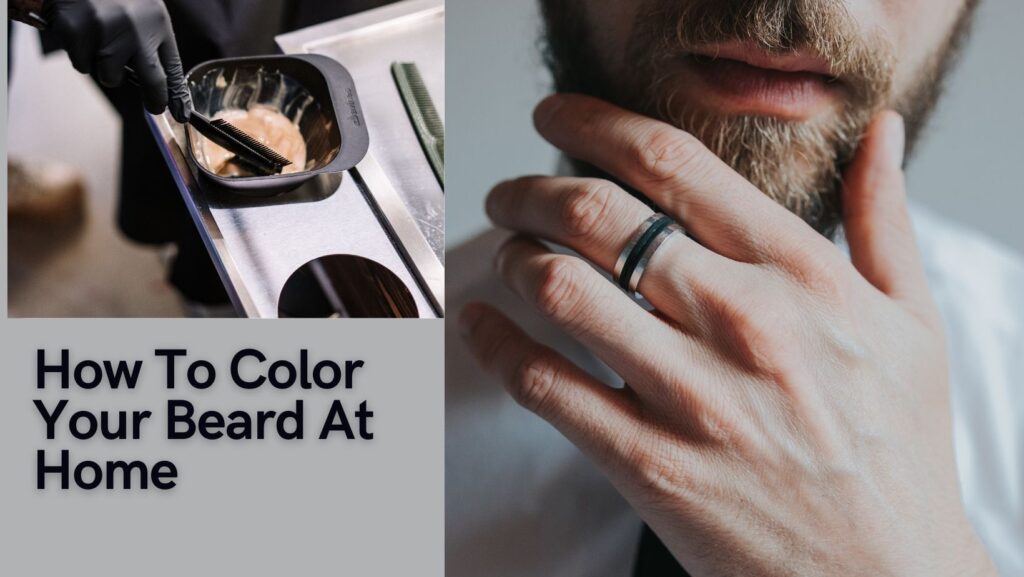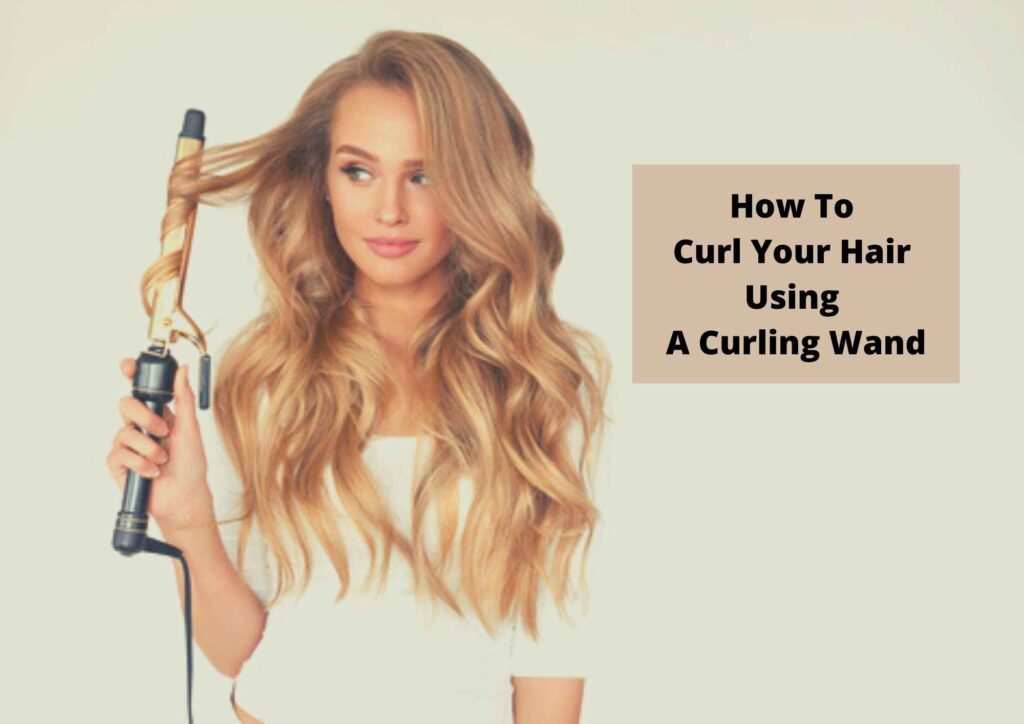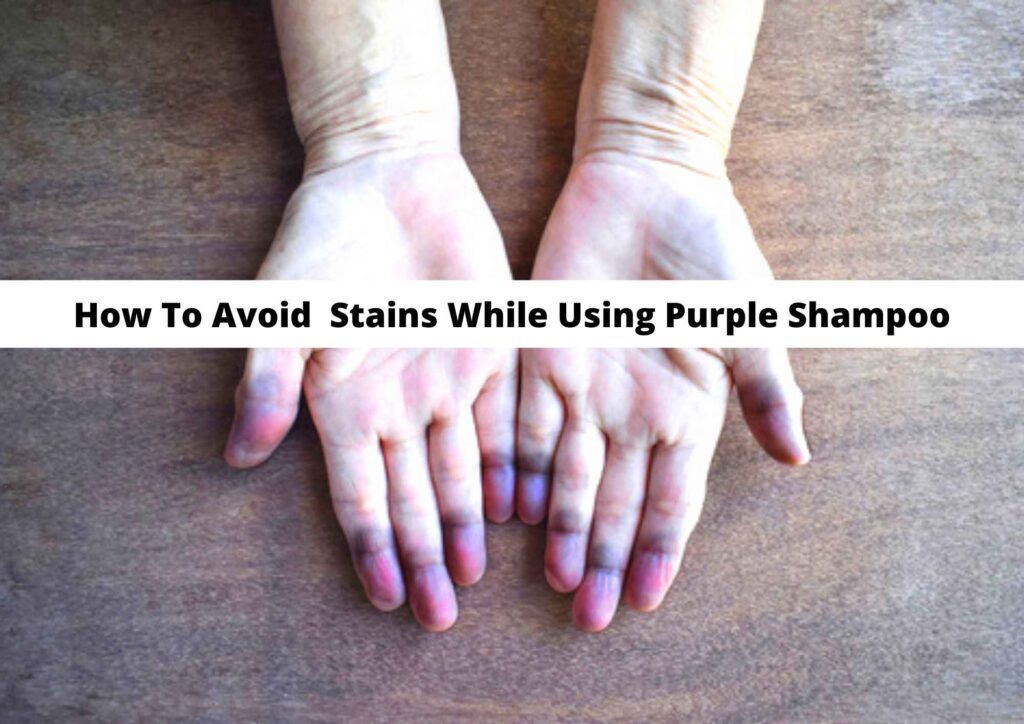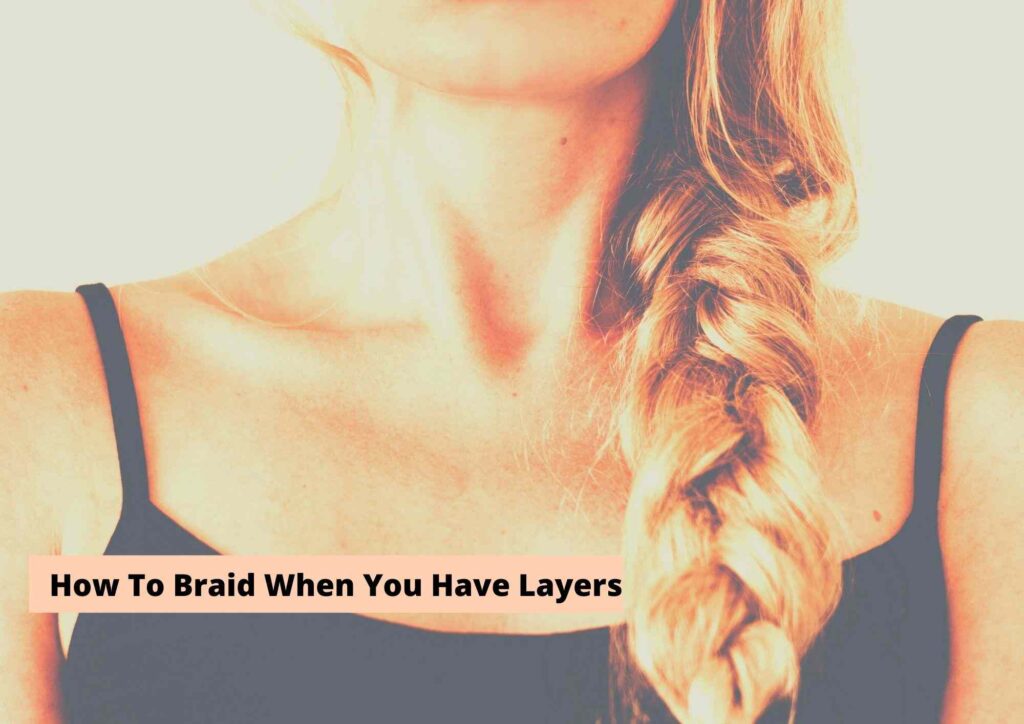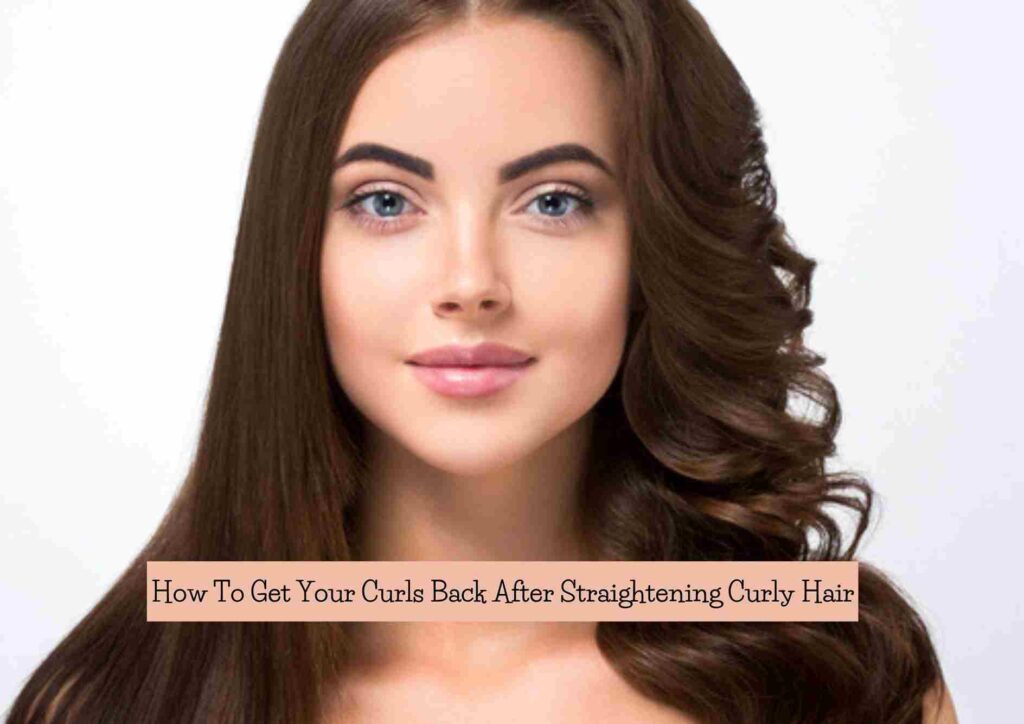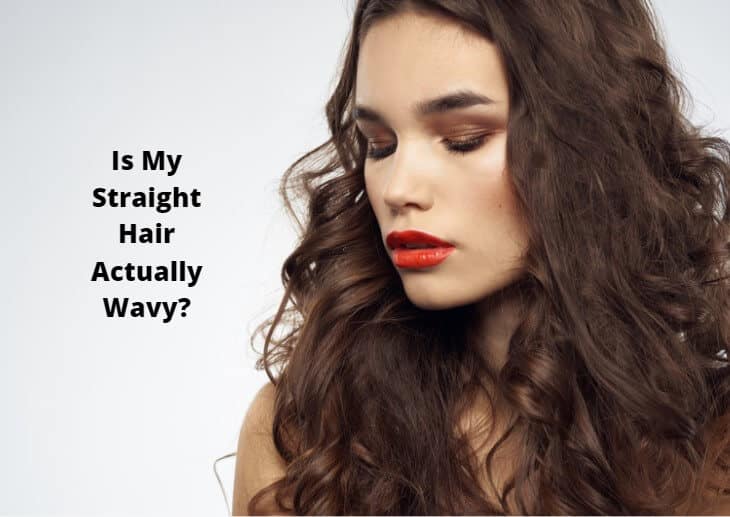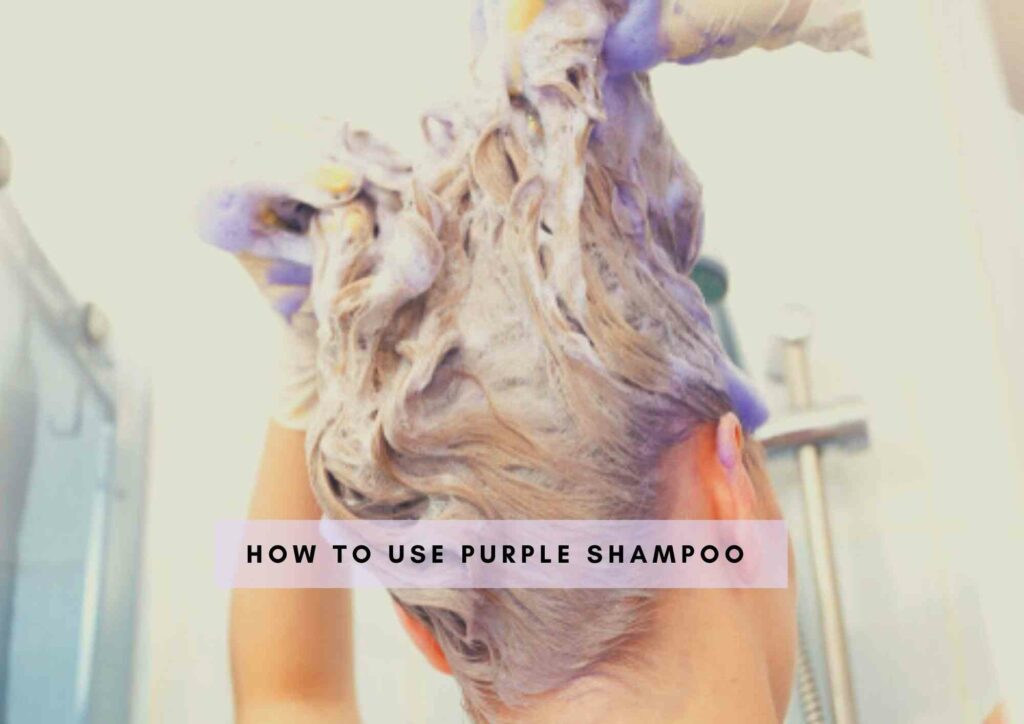Discover the side effects of Vaseline on hair in this guide. Learn how using Vaseline on your hair may impact its health, texture, and appearance.
Dive into the lesser-known implications of using a household staple in your hair care regimen as we explore the side effects of Vaseline on hair.
Vaseline, or petroleum jelly, is often touted for its moisturizing benefits and has found its way into various beauty hacks, including hair care solutions. However, the effects of this thick, occlusive substance on our tresses aren’t always straightforward.
In this article, we’ll unravel the potential consequences of incorporating Vaseline into your hair routine, examining both the good and the potentially adverse outcomes.
Whether you’re considering using it to tame frizz, soothe dry scalp, or add shine, our insights will help you weigh the pros and cons and understand how Vaseline might interact with your hair type. Join us as we shed light on this common product’s impact on hair health and styling.
Key Takeaways:
- Vaseline is nothing but petroleum jelly or petrolatum and it is made of mineral oils, combined with natural waxes.
- If you use Vaseline on a regular basis, it can lead to buildup formation and clogging of the hair follicles. This can cause folliculitis (inflammation of the hair follicles) and also lead to improper hair growth.
- Vaseline is oil-based and it is a heavy product. Thus, if it is used very often on the hair, it could weigh down the hair strands and also cause hair buildup.
- Over time, it can make the hair stand limp, weighed down and dull, making it look perpetually greasy.
- Thus, if it is used often on the hair, it will lead to buildup, because Vaseline doesn’t wash off easily as it is oil-based and this can further lead to breakouts, dandruff, milia and even bacterial scalp infections.
Side Effects of Vaseline on Hair
1. Greasiness and Buildup
One of the most common side effects of using Vaseline on hair is the greasiness it can leave behind. Vaseline is a thick, petroleum-based product that tends to coat the hair strands heavily. This can lead to a greasy appearance that makes the hair look unwashed and dirty.
Moreover, Vaseline doesn’t evaporate or get absorbed into the hair like lighter oils, so it tends to sit on the surface, attracting dust, dirt, and other pollutants. Over time, this accumulation can create buildup on the scalp and hair, making it difficult to cleanse effectively.
As a result, individuals may find themselves needing to shampoo their hair more frequently to remove the greasy residue, which can lead to dryness and further damage.
2. Difficulty in Washing Out
Another issue with using Vaseline on hair is the difficulty in washing Vaseline out of hair completely. Due to its thick consistency and water-resistant properties, Vaseline can be stubborn to remove with regular shampooing.
Even after multiple washes, some residue may still linger on the hair and scalp, contributing to ongoing greasiness and buildup. This can be frustrating for individuals who prefer a clean, lightweight feel to their hair.
Additionally, the prolonged exposure to harsh shampoos and vigorous scrubbing needed to eliminate Vaseline residue can strip the hair of its natural oils and moisture, leading to dryness, breakage, and scalp irritation.
3. Potential for Clogged Pores
Applying Vaseline directly to the scalp can pose a risk of clogging the hair follicles and pores. As a heavy occlusive agent, Vaseline forms a barrier that seals in moisture but also prevents proper airflow.
This can trap sweat, bacteria, and dead skin cells on the scalp, potentially leading to clogged pores and follicles. Over time, this may contribute to scalp issues such as acne, folliculitis, and even hair loss.
Individuals with sensitive or acne-prone skin are particularly vulnerable to these side effects. To avoid pore blockage, it’s advisable to use lighter, non-comedogenic oils or hair products specifically formulated for scalp health.
4. Lack of Nutritional Benefits
While Vaseline can provide temporary shine and smoothness to the hair, it lacks the nourishing properties of natural oils and other hair care products.
Unlike botanical oils such as coconut oil or argan oil, which contain vitamins, antioxidants, and fatty acids beneficial for hair health, Vaseline primarily acts as a moisture barrier.
It does not penetrate the hair shaft or provide any substantive nutrients to improve hair strength, elasticity, or growth. Relying solely on Vaseline for hair care may result in long-term issues such as dullness, brittleness, and stunted growth, as the hair lacks essential nourishment to thrive.
5. Potential for Staining and Transfer
Lastly, using Vaseline on hair can lead to staining and transfer onto clothing, bedding, and other surfaces. Its thick, greasy texture makes it prone to transferring onto fabrics and leaving behind difficult-to-remove stains. This can be especially problematic for individuals with light-colored or delicate fabrics, as Vaseline stains can be stubborn to launder.
Additionally, the transfer of Vaseline from the hair to the skin can exacerbate issues such as acne or skin irritation, particularly along the hairline and neckline. To avoid staining and transfer, it’s important to use Vaseline sparingly and thoroughly wash hands after application.
Why Use Vaseline on Hair in the First Place?
Well, I’ve given you a clear insight about why you shouldn’t be using Vaseline on the hair. Now, let me tell you why you should use Vaseline on your hair.
Firstly, Vaseline can help retain moisture in the hair and prevent a great amount of moisture loss from the hair strands and this is because Vaseline is oil-based in nature. Thus, when applied on the hair, it forms a layer/film on the hair strand, thereby keeping moisture from going out.
Also, when there is sufficient moisture in our hair strands, it will remain healthy and away from dryness. Therefore, Vaseline indirectly helps reduce hair breakage and split ends due to dryness. It can also help keep frizziness at bay, which otherwise occurs when the hair is dry.
All you need to do is dab some Vaseline over your split ends and frayed hair tips and leave it in for some time to absorb. It will also help add instant hair shine and improve hair luster and sheen.
There are times when our scalp feels itchy and sore (from itching) due to extreme scalp dryness. Vaseline can act as a natural emollient to hydrate the scalp skin. In addition to this, it also has anti-inflammatory properties that can relieve the skin and soothe its soreness.
At times, many people also suffer from scalp conditions like dandruff, eczema, etc., due to which they have flare ups. Thus, when Vaseline is used on the scalp, it can hydrate the scalp skin and prevent these flare ups and reduce and soothe its sore sensation.
Another benefit of using Vaseline on the hair is that it acts like a sunscreen or sun protector for the hair. Instead of using sunscreen hair sprays, you can simply apply some Vaseline on the hair and it will form a film on the hair strands, thus protecting it from the harsh rays of the sun.
Lastly, for those who have unmanageable hair, Vaseline will work as a styling product, like a gel that holds frizz and flyaways in place and can make the hair more manageable.
What Can I Use On Hair Instead Of Vaseline Petroleum Jelly?
There are multiple substitutes for Vaseline that you can use. Here are some of the best substitutes for Vaseline to use on the hair – shea butter, cocoa butter, beeswax, mango butter, olive oil and coconut oil.

Apart from these products, it would be better to avoid using any byproducts of petroleum. This will include formaldehyde, paraffin wax, petrolatum, mineral oils, naphtha etc.
How to Use Vaseline on Hair without Causing Damage
Since Vaseline is hard to get out of the hair and can be a cause for product buildup, it is better to avoid using it on a regular basis. Ideally, using Vaseline once a week or even once every 15 days would be sufficient, in addition to using it with your other regular hair care products.
When you use Vaseline on your hair, you will need to just take a little Vaseline in your palms, rub them together and apply them all over your hair and massage just a little onto your scalp as well.
Why You Should Trust Haireveryday?
The author of this article, Leah Marie Priest has a degree in Cosmetology with years of experience in dealing with hair care, scalp care, and hairstyling. As someone who extensively deals with all kinds of hair textures, products, styling methods and more, hair Leah Marie knows what kind of products and procedures suit each hair type and person. We have also tested these hair products and processes ourselves to provide you an unbiased review about every product. Each of our articles are also reviewed by a team of medical professionals so that you get the most accurate and expert-reviewed information.
Final Takeaway
As we conclude, we can definitely say that Vaseline does have some potential side effects which could be an alarming cause if this product is used on a regular basis. It could lead to buildup, hair loss, clogged hair follicles, scalp infections etc.
Therefore, it is ideally recommended to use Vaseline just twice or thrice a month and more importantly, make sure to wash it off thoroughly, failing which it could be harmful for the hair is essential.
There are many ways to get rid of Vaseline from the hair from using a good clarifying shampoo, baking powder, oil, glycerin soaps etc. therefore, there are ways to successfully get rid of Vaseline from the hair.
And thus, its side effects shouldn’t stop you from enjoying the multiple benefits of using Vaseline on the hair.
Vaseline could help tame frizz and flyaways, moisturize the hair, improve hair shine, sheen and lustre and it can also prevent moisture loss. Overall, it’s a good product if used in the right way.
Also Read:
Side Effects Of Using Rosemary Water On Hair
Side Effects Of Garlic Hair Mask On Hair
To Summarize

